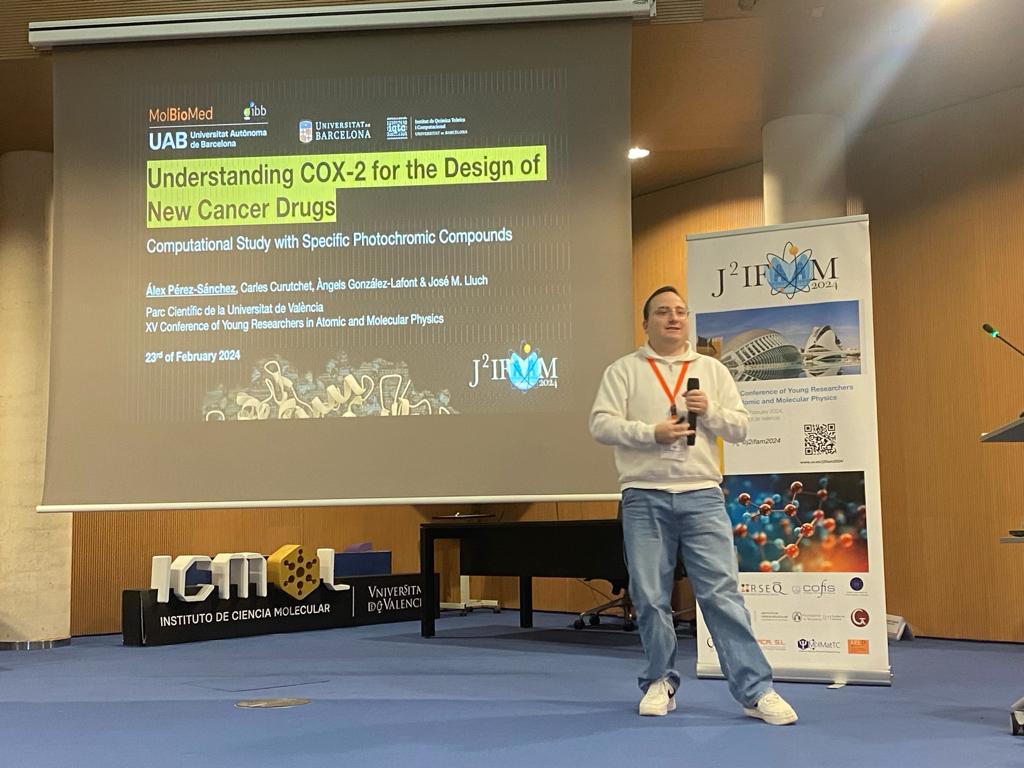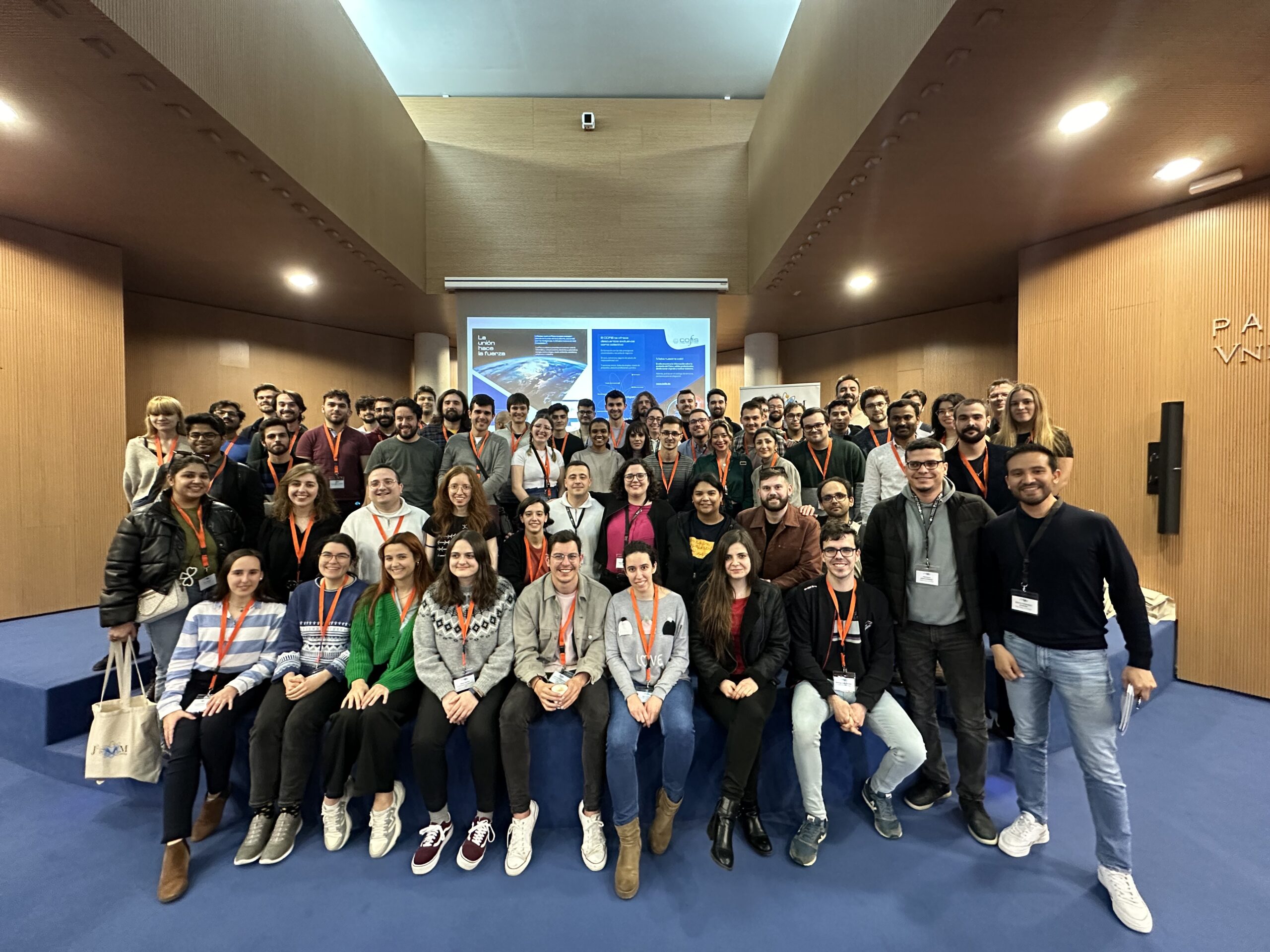Understanding COX-2 for the Design of New Cancer Drugs: Computational Study with Specific Photochromic Compounds
Álex Pérez Sánchez
Cyclooxygenases are a family of enzymes essential in the regulation of inflammation and other processes in the human body. There are two main isoforms, COX-1 and COX-2, with different roles and patterns of expression in tissues COX-1 is widely expressed and maintains homeostasis, while COX-2 is restricted to specific regions and it is inducible, especially in at inflamed tissues and cancer cells. COX-2 overexpression is associated with the development of cancer in several types of tumors. To investigate this phenomenon, fluorescent compounds derived from anti-inflammatory drugs are usually experimentally used for the detection of COX-2 in cancer cells.

Using different computational techniques (Molecular Docking, Molecular Dynamics Simulations, QM/MM and TD-DFT Calculations) we have calculated and analyzed the fluorescence spectra of a photochromic compound bound to the monomer and dimer of human COX-2. The differences between the monomeric and dimeric spectra reveals molecular insights of the protein’s behavior in cells with COX-2 overexpressed. This research provides valuable information for the possible future design of specific drugs for cancer treatments.
